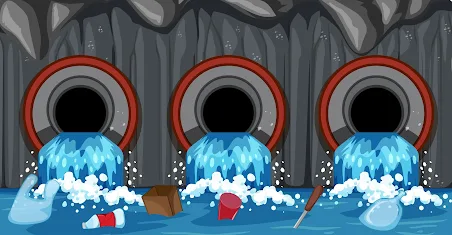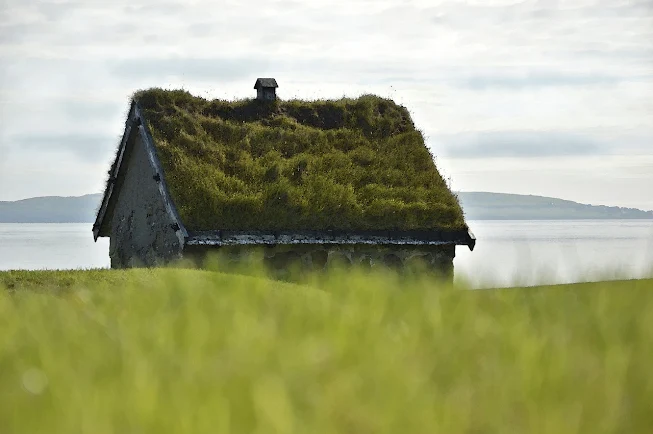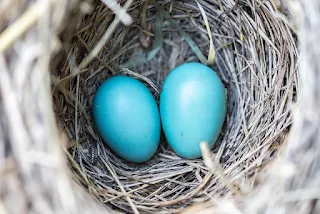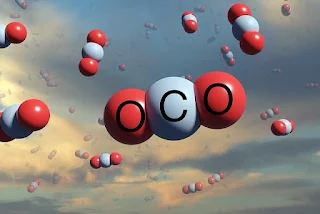Embracing Sustainability from the Ground Up with Green Roofs
In our quest for sustainability, we often look at major factors like renewable energy or electric vehicles. However, the truth is, sustainability starts at home. Or, more accurately, on top of it. One innovative solution that combines aesthetics, functionality, and environmental responsibility is the green roof, a fantastic alternative to traditional lawns. Green roofs are one of those things that always make me happy. I always have to point them out. What a cool and fun idea! Crazy events of everyday life may be happening down on a city street, but what could be happening up on a roof?
What are Green Roofs?
A green roof, or living roof, is a roof of a building that is partially or completely covered with vegetation and a growing medium, planted over a waterproofing membrane. It may also include additional layers such as a root barrier and drainage and irrigation systems. There are two types of green roofs - extensive and intensive.
Extensive Green Roofs
Extensive green roofs can also be known as "low-profile" or "eco-roofs". These types of roofs are designed to be virtually self-maintaining, meaning they need inspection and occasional maintenance only a few times per year. The roofs themselves are lightweight, with soil depths ranging from roughly 2 to 6 inches, and are thus less stressful to the building's structure.
The vegetation for these types of roofs is usually hardy groundcover that can thrive in the shallow soil and endure weather extremes. Sedum, or stonecrop, is a popular choice due to its hardiness and minimal water needs. Other plants, like wildflowers and certain types of grasses, may also be used.
These roofs aren't typically designed for regular foot traffic or recreation. Instead, they are primarily for environmental benefits and aesthetics. They are a great choice for covering large flat roofs where structural load limitations apply, such as on commercial buildings.
Intensive Green Roofs
Intensive green roofs, also known as "roof gardens" or "park roofs", are essentially elevated parks. They can include anything from shrubs and flower beds to trees and ponds, even pavilions and pathways. Consequently, they require deeper soil, often ranging from about a foot to several feet in depth, and a more robust structural support.
This type of roof garden is designed for human enjoyment, providing a peaceful, green oasis in urban environments. They can be seen in hospitals for their therapeutic benefits or in urban residential buildings as a communal space for residents.
As you might expect, the maintenance needs of intensive green roofs are higher. Regular watering, weeding, pruning, and fertilizing are needed to keep the roof in good condition. These roofs are more complex and costly to install and maintain, but they offer significant benefits, from stormwater management to urban heat island effect mitigation, not to mention the social and mental health benefits of having accessible green space in urban areas.
The Benefits of Green Roofs
Green roofs offer a host of benefits that make them an attractive proposition for sustainability enthusiasts.
Energy Efficiency
Green roofs contribute to energy efficiency through a process known as evapotranspiration, and by providing high-quality insulation.
Evapotranspiration and the Cooling Effect
Evapotranspiration is a process where water is transferred from the land to the atmosphere by evaporation from the soil and other surfaces, and by transpiration from plants.
During the hot summer months, the plants on a green roof absorb sunlight, and a significant portion of this absorbed energy is used in the evapotranspiration process. As the water in the plants evaporates, it cools the surrounding air, similar to the way sweating cools your body.
This reduces the surface temperature of the roof and the amount of heat transferred into the building below, leading to lower air conditioning needs. This is particularly beneficial in urban areas, which often suffer from the "heat island" effect, where concentrated human activity and concrete structures significantly raise city temperatures.
Insulation and Energy Conservation
In addition to evapotranspiration, the soil and plant layers of a green roof provide excellent insulation. Just like how a layer of insulation in your walls or attic reduces heat transfer between the inside and outside of your home, the layers of a green roof reduce heat transfer between the outside air and the building underneath.
During the winter months, the green roof's insulating properties mean less heat escapes from the building, reducing the amount of energy needed for heating. In the summer, the roof helps keep the heat out, lowering the energy required for cooling.
In essence, green roofs create a buffer zone that minimizes temperature extremes, making the building's interior temperature more stable and comfortable. By reducing the need for heating and cooling, green roofs can significantly cut energy consumption and associated carbon emissions, contributing to a building's overall energy efficiency and sustainability.
Stormwater Management
Stormwater management is a key component of urban infrastructure design, and green roofs can play a significant role in improving its efficiency.When rain falls on a conventional roof, the water is immediately directed to gutters and downspouts, and from there it enters the stormwater management system, which often consists of drains, pipes, and possibly a stormwater pond or similar feature. If the rainfall is heavy, this can result in a large volume of water entering the system all at once, which can lead to overflows, flooding, and the discharge of untreated water into local waterways.
A green roof, on the other hand, consists of a growing medium (soil or a soil-like substance) and vegetation. When rain falls on a green roof, several things happen:
- Absorption: The plants, growing medium, and other components of the green roof absorb some of the rainwater. This is similar to how rainwater is absorbed by a garden or a natural landscape.
- Retention: The absorbed water is used by the plants for growth and transpiration (the process of water movement through a plant and its evaporation from aerial parts, like leaves, stems and flowers). Some water also evaporates directly from the soil and other surfaces.
- Delayed Runoff: Not all water is absorbed and retained. Some will eventually flow off the roof. However, because of the absorption and retention, this happens at a much slower rate than it would on a conventional roof. The runoff is also cleaner, as many pollutants are filtered out by the soil and plants.
 |
| Image by brgfx on Freepik |
These features of green roofs can greatly reduce the volume of water that enters the stormwater management system at any given time, and also delay the time at which runoff occurs. This 'peak shaving' and time delay can significantly lessen the strain on sewer systems during heavy rainfall, reducing the risk of overflows and flooding, and improving the quality of urban runoff.
Moreover, by managing stormwater at its source, green roofs can also reduce the need for expensive downstream stormwater management infrastructure, leading to cost savings for municipalities and other stakeholders.
Biodiversity and Habitat
Green roofs can provide valuable habitat in urban environments where green space is limited. Habitat creation: Green roofs can mimic a variety of natural habitats, depending on their design. They can replicate meadow or woodland habitats, or even specialized environments such as heathland or wetland. This creates space for species that may have been displaced by urban development.
Foraging resources: Green roofs can provide a rich source of nectar and pollen for pollinators like bees and butterflies. They can also provide food in the form of seeds and insects for birds.Breeding grounds: Green roofs can provide safe places for a variety of species to breed. For example, certain types of ground-nesting birds may find suitable nesting sites on green roofs.
Refuge from predators: The height of green roofs can provide a refuge from some ground-based predators, making them safer places for some species to inhabit.
Corridors for wildlife: In highly urbanized areas, green roofs can act as 'stepping stones', allowing species to move between remaining fragments of natural habitat. This can be particularly important for pollinating insects.
Microclimate regulation: Green roofs can create cooler, more humid microclimates than the surrounding urban environment. This can be beneficial for many species, particularly in cities where the 'urban heat island' effect can cause temperatures to rise significantly.
Biodiversity hotspots: Because green roofs can support a range of different habitats, they can potentially support high levels of biodiversity. This is particularly the case for 'biodiverse' or 'brown' roofs, which are designed specifically with biodiversity in mind.
However, it's also worth noting that the biodiversity value of green roofs can be highly variable, and depends on factors such as the design of the roof, the types of plants used, and the maintenance regime. Thus, if biodiversity conservation is a key objective, it's important that green roofs are designed and managed with this in mind.
Air Quality
Pollutant Absorption: Plants, particularly their leaves, can absorb airborne pollutants such as nitrogen dioxide and sulfur dioxide. These pollutants are absorbed through the stomata (microscopic pores in the leaf surface) and then metabolized or sequestered in the plant tissue.Particulate Matter Capture: The rough and often sticky surfaces of leaves can trap particulate matter (PM), a key component of air pollution. PM includes dust, soot, and other tiny particles that are released from sources like cars, factories, and construction sites. When it rains, these particles are then washed off into the soil of the green roof, effectively removing them from the air.
Oxygen Production: As a by-product of photosynthesis, plants release oxygen into the atmosphere. This contributes to the availability of oxygen, which is essential for human health and wellbeing.
Temperature Regulation and Smog Reduction: By providing shade and reducing the temperature through evapotranspiration (where water is evaporated from plant leaves), green roofs can help mitigate the urban heat island effect, a phenomenon where urban areas become significantly warmer than their rural surroundings. This can indirectly improve air quality as high temperatures can lead to the formation of harmful ground-level ozone, a key component of smog.
Noise Reduction: In addition to improving air quality, green roofs also have noise absorption qualities. The substrate and vegetation of a green roof can reduce ambient noise, providing a quieter, more pleasant urban environment.
Check out Making the Switch to Green Roofs for more information!






No comments:
Post a Comment